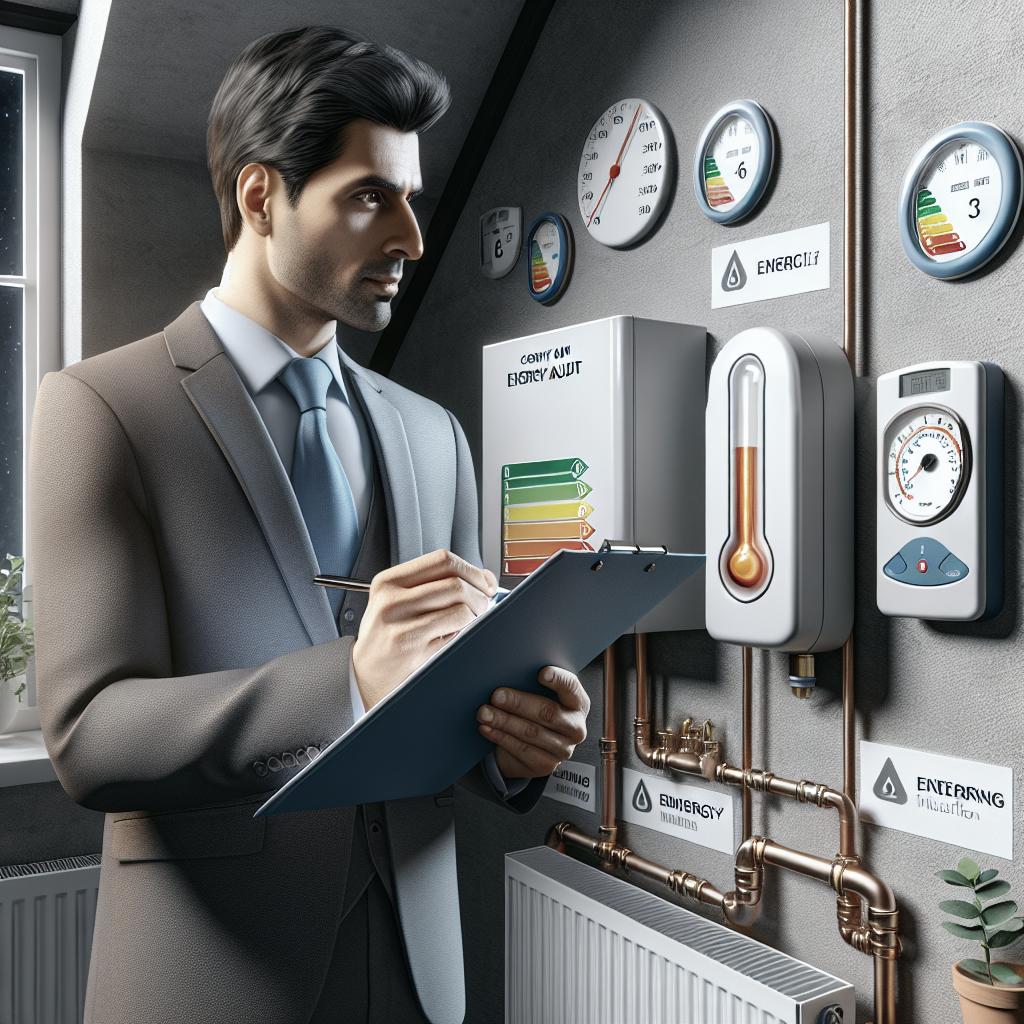When it comes to running a business, one key factor that can significantly impact both your bottom line and your environmental footprint is energy consumption. Conducting an energy audit is a comprehensive way to evaluate how efficiently your business consumes energy and to identify opportunities for savings. This blog post will guide you through the essentials, including the definition of an energy audit, its benefits, and practical steps to complete one. We’ll also explore the aftermath—how to choose which recommendations to implement and additional steps to optimize your process further. Let’s dive in.
What is an energy audit?
An energy audit is a thorough examination of the energy usage of a building, facility, or system. It involves the collection and analysis of energy data, which helps to identify energy consumption patterns, inefficiencies, and potential areas for improvement. Essentially, an energy audit serves as a blueprint for making your business more energy-efficient. Energy audits come in various types, ranging from simple walkthroughs to comprehensive analyses. The level of detail and the scope can vary, but they all focus on pinpointing where energy is being wasted and recommending solutions to optimize energy use.
What can an energy audit do for your business?
Saves you money
One of the most significant advantages of an energy audit is the potential financial savings. By identifying inefficient practices and suggesting improvements, an energy audit can reduce energy bills. Businesses often find that small adjustments, such as fixing leaks or upgrading to energy-efficient lighting, can lead to substantial savings. Moreover, some recommended changes might qualify for rebates, grants, or tax incentives. Knowing where and how to make these changes can enable your business to capitalize on such financial opportunities.
Reduces greenhouse gas emissions
A direct consequence of using energy more efficiently is the reduction of greenhouse gas emissions. When your business consumes less energy, it reduces its reliance on fossil fuels, thereby cutting down the emissions that contribute to climate change. This not only benefits the environment but also enhances your company’s reputation as a socially responsible entity. Many consumers and partner organizations prefer to work with companies that prioritize sustainable practices. Reducing your carbon footprint can, therefore, offer indirect benefits like improved customer loyalty and better brand image.
Helps you make smart choices
An energy audit provides you with data-driven insights that empower you to make informed decisions about your operations. Whether it’s choosing the best time to run energy-intensive machinery or determining which investments will yield the most significant returns, the audit’s findings guide your choices. This analytical approach ensures that any investments or changes you undertake are strategic and impactful, rather than based on guesswork. Over time, this not only optimizes current operations but prepares your business for future energy needs and challenges.
How to complete an energy audit—and what to expect
Choosing an auditor
Selecting the right auditor is crucial for the success of the audit. Look for accredited professionals with experience in your industry. Credentials such as Certified Energy Manager (CEM) or Professional Engineer (PE) indicate proficiency and reliability. Consider reaching out to multiple auditors to compare their services, methodologies, and costs. Make sure to check references and, if possible, speak to previous clients to gauge the auditor’s effectiveness and professionalism.
Preparing for the audit
Preparation involves gathering necessary documents, such as utility bills, equipment manuals, and historical energy usage data. This information will provide a baseline for the auditor and facilitate a more accurate analysis. Additionally, ensure that key staff members are available to answer questions and provide insights into daily operations. The more comprehensive and accurate the data provided, the more reliable the audit findings will be.
After the audit: Choosing what recommendations to implement
Starting with no- and low-cost measures
Once the audit is complete, you’ll receive a report outlining various recommendations, ranging from straightforward and low-cost measures to more significant investments. Begin by implementing the no- and low-cost measures first, as they often provide immediate savings and a quick return on investment. Common low-cost actions include sealing leaks, improving insulation, calibrating equipment, and adjusting schedules for heating and cooling systems. These fundamental changes can dramatically reduce energy wastage without requiring substantial financial outlay.
Understanding the interactive effect
It’s essential to consider the interactive effects of different measures. Some changes may influence others positively or negatively. For instance, upgrading to energy-efficient HVAC systems can reduce the load on older insulation, making it more effective. Look at the audit recommendations holistically and understand how they interact. Implementing complementary measures can maximize energy savings and improve overall system performance.
More actions you can take in process optimization
Process optimization extends beyond the initial audit recommendations and involves continuous improvements in your operations. Invest in monitoring systems that provide real-time data on energy use, allowing you to make timely adjustments. Another effective strategy is to engage employees in energy-saving initiatives. Educate staff about best practices, and incentivize energy-efficient behaviors within your workplace. Employee participation can lead to innovative ideas for further energy optimization.
Further reading
For those eager to delve deeper into the subject, numerous resources are available: – The U.S. Department of Energy’s “Advanced Energy Auditing” guide. – The Carbon Trust’s “Guide to Energy Audits.” – ASHRAE’s “Procedures for Commercial Building Energy Audits.” These guides offer comprehensive tips, methodologies, and case studies that can enhance your understanding and execution of energy audits.
Lessons learned
| Section | Key Takeaway |
|---|---|
| What is an energy audit? | An energy audit examines energy consumption to identify inefficiencies and opportunities for savings. |
| What can an energy audit do for your business? | An energy audit can save money, reduce emissions, and guide smart decisions. |
| How to complete an energy audit—and what to expect | Choose a qualified auditor, prepare thoroughly, and expect detailed insights into energy use. |
| After the audit: Choosing what recommendations to implement | Start with low-cost measures and understand the interactive effects of different changes. |
| More actions you can take in process optimization | Continuously monitor energy use and involve employees in energy-saving initiatives. |
| Further reading | Numerous expert resources are available for deeper insights into conducting energy audits effectively. |

